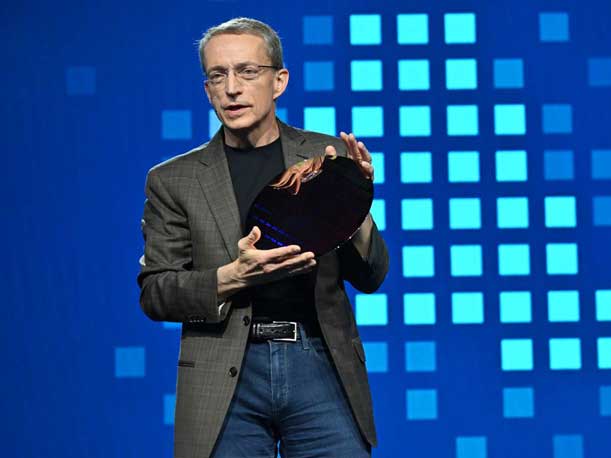Intel Heralds Server Chip Revamp With Upcoming Xeon 6 CPUs
The semiconductor giant’s upcoming Xeon 6 processors bring about a big brand change and microarchitecture options for performance cores and efficient cores. CRN explains what channel partners need to know about Intel’s upcoming server chip revamp.

When Intel releases its next wave of Xeon server CPUs in the coming months, it will represent a major change not only for the brand but also for how the company competes in the data center, edge and cloud infrastructure markets amid increasing competition.
Announced at Intel Vision on Tuesday, the semiconductor giant revealed an updated brand for Xeon that will take effect with the upcoming sixth generation. Rather than calling the product family 6th-Gen Intel Xeon, it’s called Intel Xeon 6, ditching the generation nomenclature and moving the generation number to the end of the name.
[Related: Intel’s Gaudi 3 AI Chip Targets Nvidia H100, H200; Scales To 8,000-Chip Clusters]
“The brand makes it easier to tell a unified Intel Xeon story, it eases customer navigation with an intuitive organization, and [it] amplifies our performance signals,” said Das Kamhout, a vice president and senior principal engineer in Intel’s Data Center and AI Group, in a briefing.
But the bigger change coming to Xeon are the two microarchitecture options, which starts with this year’s sixth-generation lineup. Rather than relying on a single core type for all CPUs in the lineup, as Intel has done in the past, the upcoming product family will consist of processors containing one of two core types: a performance core (P-core) or an efficient core (E-core).
Whereas the Xeon 6 processors with P-cores are optimized to deliver performance for compute-intensive and AI workloads, the ones with E-cores are optimized to deliver efficiency for high-density and scale-out workloads. Both can handle general-purpose work.
The decision to bifurcate Xeon CPUs between two core types is about “delivering flexibility to meet any organization’s diverse efficiency and performance requirements,” according to Kamhout. Intel introduced the idea of P-cores and E-cores in 2021 with the launch of the 12th-Gen Core client processors, many of which include both core types.
“They utilize a compatible architecture with a shared software stack and the largest ecosystem of hardware and software vendors in the world, so you can find solutions to match basically any business need,” he said.
The Xeon 6 processors with E-cores will arrive first, launching later this quarter. Formerly code-named Sierra Forest, the processors take advantage of the E-cores to “deliver exceptional efficiency” and bring core counts to new highs, both for Intel and the industry.
Last September, Intel revealed that the Xeon 6 E-core lineup will include a processor carrying an unprecedented 288 cores. This is almost 100 cores greater than the 192-core AmpereOne processor that Ampere Computing revealed last year for servers and cloud instances. By contrast, AMD’s highest core count CPU is last year’s 128-core EPYC 9754, which is made possible by the chip designer’s efficiency-focused Zen 4c core.
The focus on efficiency means Xeon processors with E-cores will provide “exceptional performance per watt and distinct advantages for cloud-scale distributed workloads that demand higher throughput” on top of the high core density, according to Kamhout.
This, in turn, can help organizations reduce energy consumption in their data centers, he said.
To demonstrate how, Kamhout provided an example of a telecommunications server deployment that has 200 server racks powered by 2nd-Gen Xeon processors, which debuted five years ago. To achieve the same level of throughput with Xeon E-core processors, the telecom operator would only need 72 server racks, which would reduce power consumption by more than 1 megawatt, according to the executive.
“That's a full year's worth of electricity use for over 1,300 homes,” Kamhout said, adding that the energy savings could be set aside to power server clusters made up of Intel’s Gaudi AI chips, which include the Gaudi 3 processors coming out later this year.
The Xeon 6 processors with P-cores will arrive “soon after” the E-core versions, according to the company. Formerly code-named Granite Rapids, these CPUs will serve as the direct successor to the 5th-Gen Xeon processors that launched last year.
Among the new features in the Xeon 6 P-core lineup is software support for the MXFP4 data format, which Intel said reduces next token latency by up to 6.5 times when compared to 4th-Gen Xeon processors using the FP16 data format.
This, according to the company, allows the upcoming processors to run large AI models like the 70-billion-paramater Llama 2 as an alternative to accelerator chips, a point that Intel CEO Pat Gelsinger (pictured) emphasized in his Tuesday keynote at the Intel Vision event.
“Xeon is not only able to be your database front-end, but increasingly, it's able to run the [large language models] as well. No new management. No new networking. No new security models. No new IT. No new things to learn. No proprietary networking. It just works on the industry-standard Xeons that you know and love,” he said.